Let’s be honest—everyone thinks they know how to make scrambled eggs. You crack some eggs, throw them in a pan, stir them around, and boom! Breakfast. But if you’ve ever had mind-blowingly creamy, fluffy, and buttery scrambled eggs at a fancy café and wondered, Why don’t mine taste like this?, you’re in the right place.
Because today, I’m spilling the secrets. And trust me, by the end of this, you’ll never look at scrambled eggs the same way again.
Secret #1: Eggs Love to Be Treated Gently
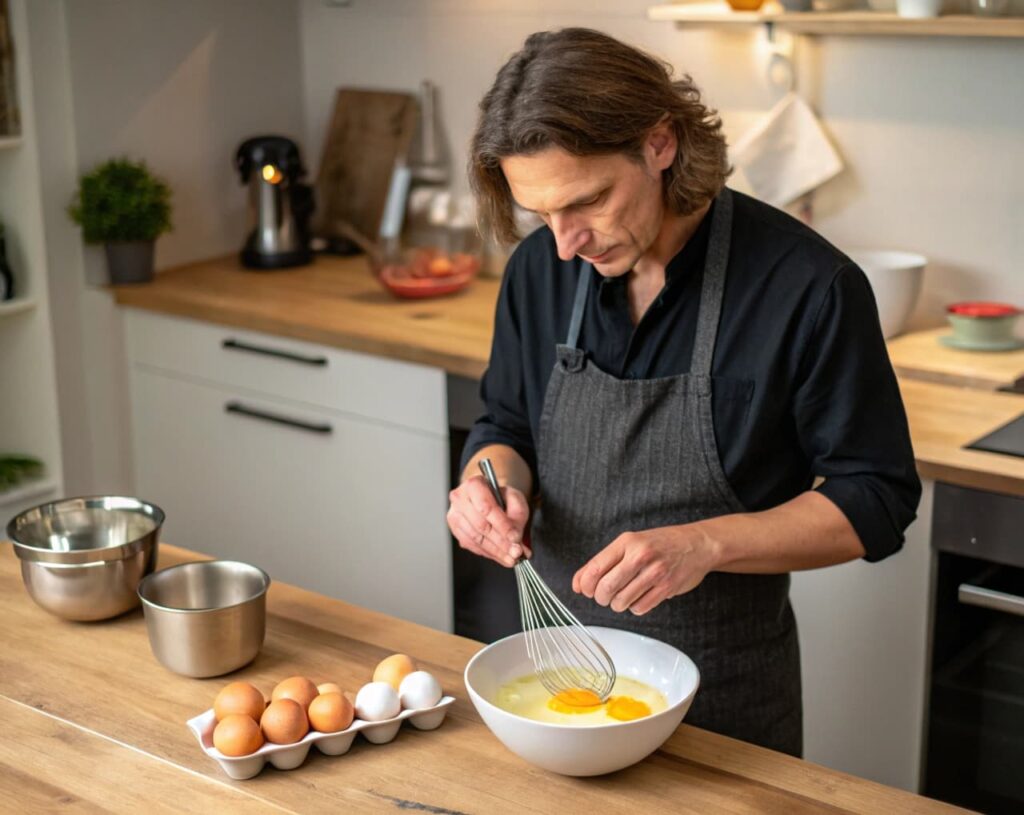
Scrambled eggs are like a diva pop star—they need to be handled with care. If you rush them, overcook them, or (gasp) cook them on high heat, they’ll turn into rubbery sadness. Low and slow is the name of the game.
Whisk your eggs thoroughly (air is your friend here) and cook them over low heat, stirring constantly. This will give you those dreamy, soft, custard-like curds instead of dry, overcooked chunks.
Secret #2: The “No Milk” Rule
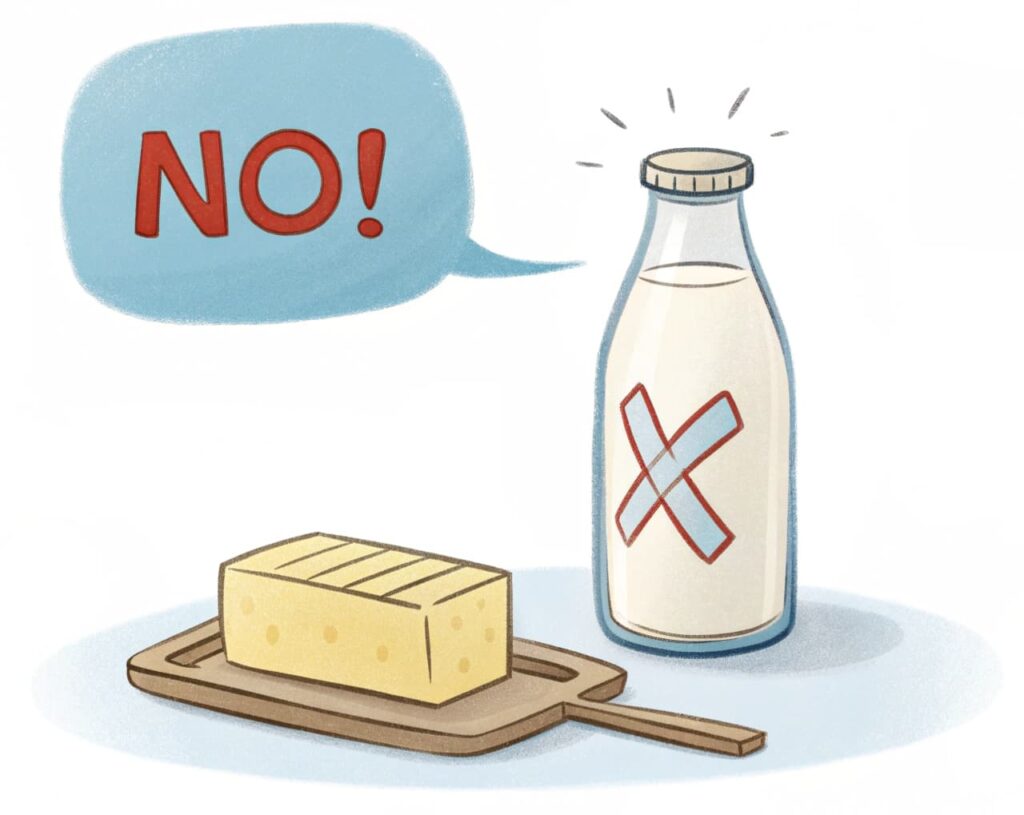
Okay, let’s settle this debate once and for all. Should you add milk to your scrambled eggs? No.
Milk doesn’t make them creamier—it actually waters them down, leaving you with a weird texture. If you want creamy eggs, the real MVP is butter. Or, if you’re feeling fancy, a little bit of crème fraîche.
Secret #3: The Heat Trick
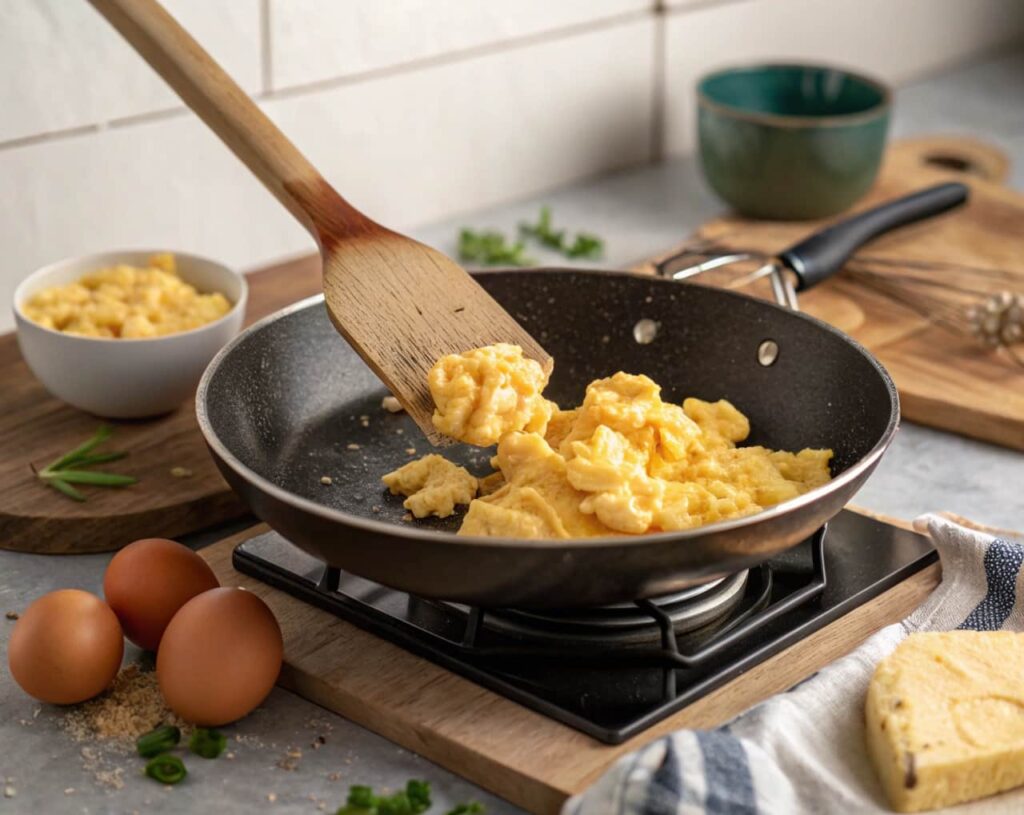
Here’s what separates pro-level scrambled eggs from the sad, rubbery stuff: taking them on and off the heat.
Cook your eggs over low heat, and every few seconds, lift the pan off the stove while stirring. This keeps them from overcooking and allows them to set up into silky, soft folds.
Secret #4: The Spatula Matters More Than You Think
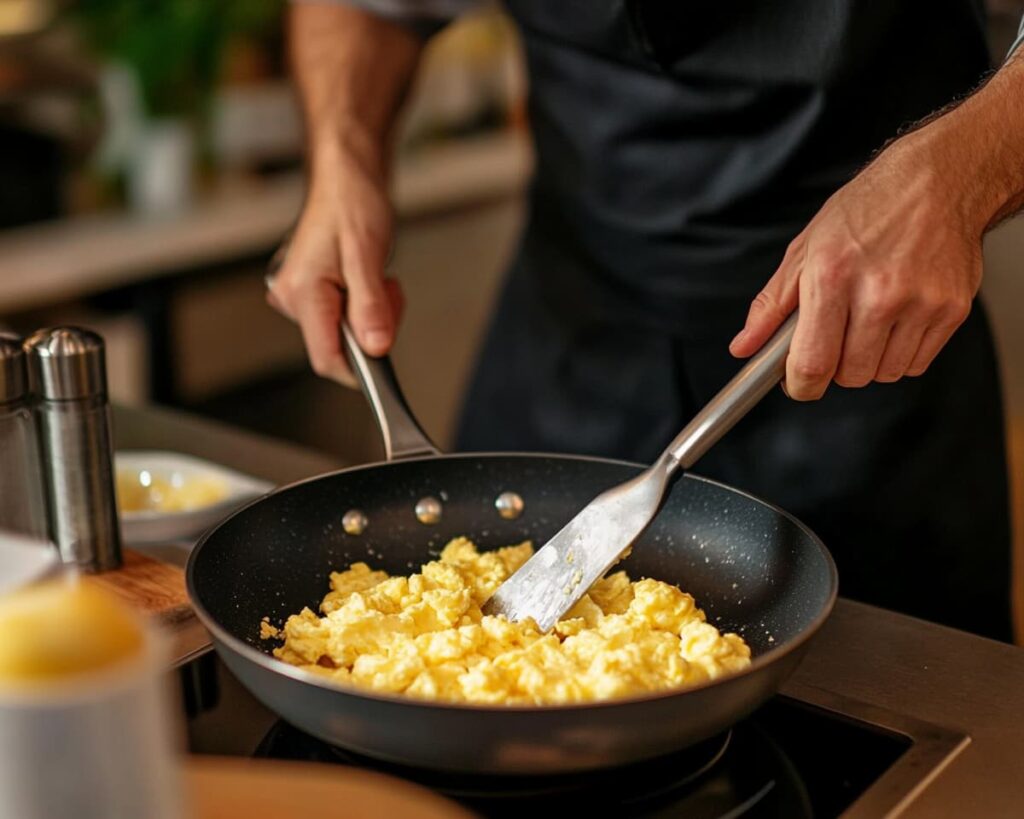
The key to perfect scrambled eggs is using a rubber or silicone spatula. It’s gentle on the eggs, doesn’t scratch your pan, and helps you fold the eggs into soft, fluffy curds instead of breaking them apart.
Secret #5: The Timing is Everything
Ever wonder why your eggs look perfect in the pan but then turn dry and clumpy on your plate? That’s carryover cooking.
Take your eggs off the heat before they look completely done. Residual heat will finish cooking them while they sit in the pan. If they look done in the pan, they’ll be overcooked by the time they hit your plate.
Secret #6: Season at the Right Time
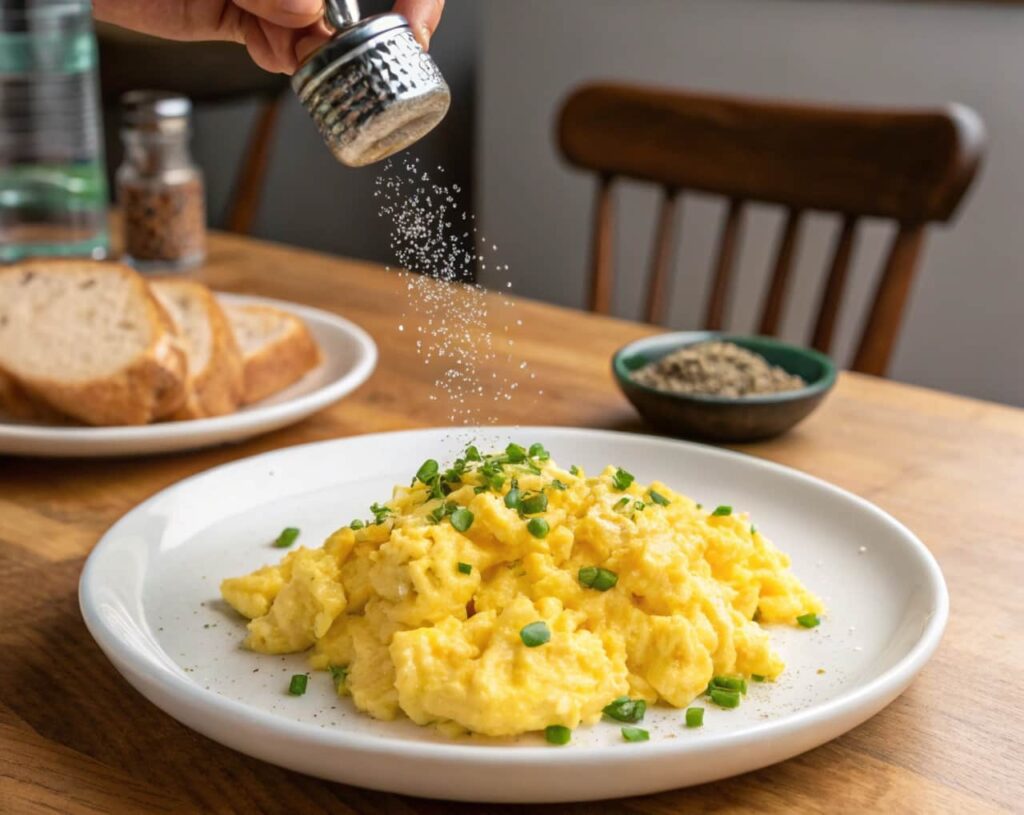
Salt is crucial for flavor, but if you add it too early, it breaks down the egg proteins and makes your eggs watery. The best time to salt your scrambled eggs? Right at the end, after they’re cooked.
And while we’re at it, let’s talk about black pepper—it burns easily. So unless you love that bitter taste, add it after cooking, too.
Bonus Secret: The Ultimate Scrambled Egg Hack
If you really want to level up, here’s a trick: Stir in a teaspoon of cold butter right at the end. The cold butter stops the cooking process instantly and gives you an extra silky, rich texture. It’s like magic.
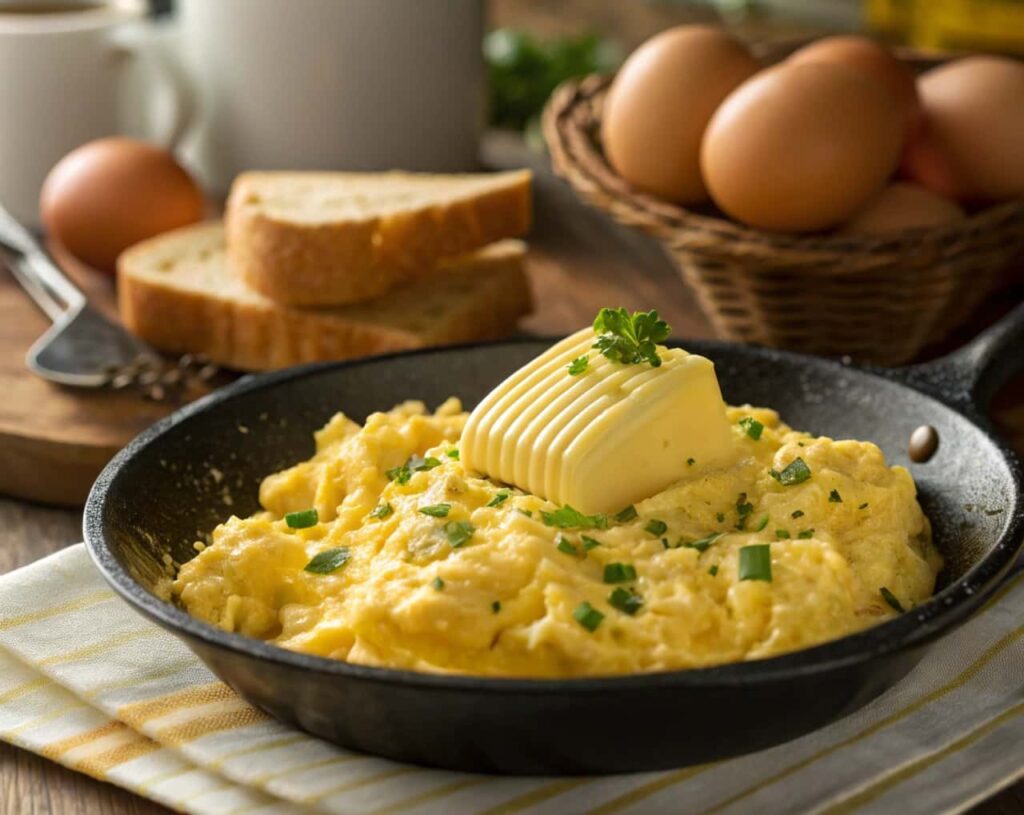
The Perfect Scrambled Eggs Recipe
Now that you know all the secrets, let’s put them together. Here’s the only scrambled eggs recipe you’ll ever need:
Ingredients
- 3 large eggs
- 1 tablespoon butter (plus an extra teaspoon for finishing)
- A pinch of salt
- Freshly ground black pepper (to taste)
Instructions
- Crack the eggs into a bowl and whisk until fully combined and slightly frothy.
- Heat a non-stick pan over low heat and add the butter.
- Pour in the eggs and stir continuously with a rubber spatula.
- Every few seconds, lift the pan off the heat while stirring to prevent overcooking.
- When the eggs are soft but still slightly underdone, remove them from heat.
- Stir in the extra teaspoon of cold butter and season with salt and black pepper.
- Serve immediately and enjoy the best scrambled eggs of your life.
Perfect scrambled eggs are just the beginning! If you’re looking for a simple way to elevate all your dishes, you need to check out The Secret Ingredient That Will Elevate Your Cooking. Trust me, this one little trick can make everything taste better—yes, even your eggs!
Final Thoughts
So there you have it—the secrets to perfect scrambled eggs. No more sad, rubbery breakfasts. No more watery disasters. Just creamy, silky, buttery perfection every single time.
Try this method, and I promise you’ll never go back. And if someone tries to tell you to add milk to your eggs? Just smile 😁, nod, and keep this secret to yourself.



